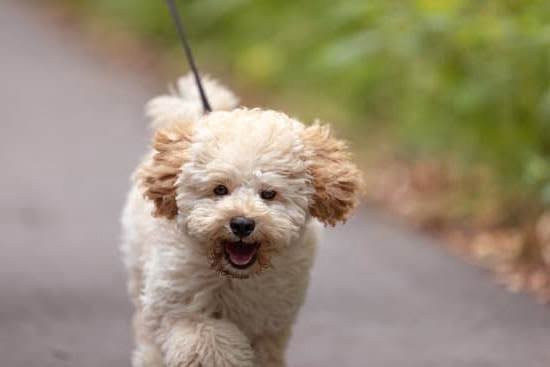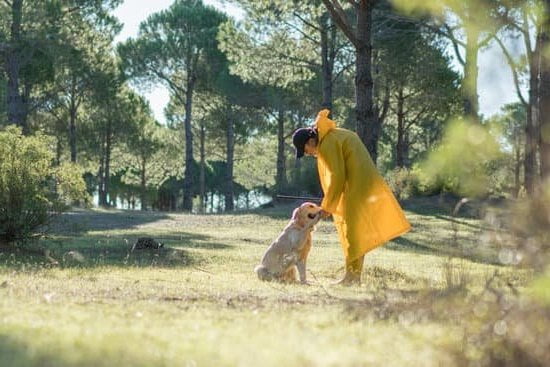Introduction
A dog training dummy is an important piece of equipment for any dog owner to own. This simple device can vastly improve the effectiveness of your training sessions, as it encourages your pup to focus on specified objectives and their corresponding commands.
The primary benefit of using a dog training dummy is that you can customize how you use it to best suit your canine companion’s learning abilities. For example, if your dog struggles with fetching or retrieving items, or needs extra practice in these activities, then a training dummy would allow you to reinforce those skills through repetition. The dummy also enables you to provide all sorts of stimuli for your pooch, such as different scents that encourage sniffing or tugging toys which build up their muscles and strength. Additionally, this type of dummy could be used for water retrieval drills, so that pups can become accustomed to jumping into bodies of water and bringing back items efficiently. You may even find it useful for teaching basic behaviors like “stay” and “come” in order to keep them engaged with the activity while following commands.
There are a number of other benefits associated with using a dog training dummy as well. It allows you to set goals for each lesson and track progressive performance over time; this helps build your pup’s confidence as they master one task after another. Also, having a dedicated tool makes the whole process more enjoyable for both yourself and Fido – no more chasing balls! Finally, by introducing distractions gradually through added elements such as noise or movement (as opposed to completely out-of-the-blue stimuli), you can help desensitize him or her toward unfamiliar sights and sounds in their environment while still keeping the focus on practice tasks at hand.
What Is a Dog Training Dummy and How Do You Use It?
A dog training dummy is a tool that can be used to help train and condition a dog to follow commands. It is typically a cloth-filled, cone-shaped object that resembles the shape of a real animal or prey. The dummy can be used in many different ways to help reinforce behaviors like chasing and retrieving, as well as teaching obedience skills such as sit, stay, heel, recall and more. In order to use a dog training dummy effectively with your pup, it’s important to start off by introducing the training aid in an exciting yet controlled manner before progressing into more difficult drills. Begin by tossing the dummy close enough for your pup to reach it, then give them verbal praise for doing so. As your pup becomes more experienced with retrieving the dummy on command, you can increase the distances of each throw until they become comfortable tracking and retrieving from far away. Additionally, you could incorporate reward-based positive reinforcement into the dummy tosses by using treats or rewards each time your pup successfully completes a fetch or retrieval task.
Benefits of Incorporating a Dog Training Dummy Into Training
A dog training dummy can provide a multitude of different benefits to both owners and their furry friends during the training process. The most obvious benefit of incorporating these dummies into your training program is that they create an opportunity for realistic simulations when trying to teach something such as trapping objects or learning how to fetch on command. Having a dummy that won’t react or move except in the way it was designed affords the handler more control over their canine partner’s behaviors since they can reset the dummy if need be, and some models even have built-in features allowing them to shake, squeak, and/or move in order to draw out a response from the dog trainee. This provides realistic feedback when performing drills like directed retrieve drills, search drills, and tracking drills – things associated with lifelong skills such as detection work or SAR. Furthermore, a training dummy can create continuity throughout the teaching process because it mimics its characteristics regardless of whether it’s positioned in one spot indoors or outdoors. This helps your pup retain consistency when switching environments instead of being thrown off track by different shapes and sizes of physical objects each time you enter distinct locations or scenarios. Ultimately, using a dog training dummy as part of your overall educational regimen may prove to be beneficial for both you and your pup!
Proficiency in Dog Training Dummy Use
Dog training dummies are invaluable tools in teaching dogs sports such as field trials, retriever work, hunting and lure coursing. Dog dummies can also be used to teach obedience skills, retrieve work and specific commands such as fetch and drop. Developing proficiency in the use of these types of dog training devices requires several techniques and strategies.
First off, when working with a dog dummy for the first time, introduce it slowly and incrementally to your pet’s exercise routine as to not overwhelm them or cause them undue stress. Try exposing your dog only for a few minutes at a time in the beginning. This could involve throwing it for your dog so they become accustomed to its shape, size and movement. Later on you can start lengthening the sessions with positive reinforcement when they complete tasks correctly.
Teaching mental stimulation activities involving dog training dummies is an excellent way to improve your pet’s overall learning capacity. Simple exercises can include having them search for the dummy among hiding spots or teaching them to carry two dummies at once by using verbal commands such as “drop” or “switch”. You can also incorporate longer sequences of commands into their training which will help sharpen their memorization skills.
Most importantly, praise should always accompany successful executions of commands so that your pet understands what behavior is expected from them when approaching a task involving a dummy or other training device. Doing regular check-ins during practice sessions will also give feedback on progress towards mastering this type of skill set. With practice, both you and your pet will achieve better results from becoming proficient in using a dog training dummy!
Different Types of Dog Training Dummies
A dog training dummy is an essential tool when it comes to training your canine. It helps teach them obedience, retrieval and even boost their prey drive. There are several different types of dog training dummies available on the market today.
The most common type of dog training dummy is a canvas dummy with a built-in handle to help you easily retrieve it during outdoor activities like hunting or agility competitions. It’s typically filled with natural materials like feathers, fur, feathers and wood chips to create an acceptable scent for your pet.
Another type of dummy is made from plastic and filled with sand or steel shot for weight and balance for throwing exercises. These dummies come in several shapes such as pigeons, rabbits, ducks and gamefowl so that your pup can learn target focus as well as retrieval skills in a distraction-free environment.
You may also find synthetic fur-covered dummies perfect for teaching young dogs how to properly fetch, carry and hold objects during hunting trips and field trials. They are also great for helping puppies learn tracking behaviors such as retrieving downed game birds or locating fallen prey.
Finally, there are rubber dummies which offer more realistic texture than canvas or synthetic fur based models but still lack the odors associated with live animals making them suitable only for basic obedience drills like recall commands and scent detection exercises which don’t rely on smell cues to achieve success.
Strategies for Optimizing Dog Training Dummy Use
One of the most effective methods of training a dog is making use of a dog training dummy. These dummies come in various shapes and sizes, but their purpose is the same – to teach the pup important tasks such as retrieving items and being obedient. Here are some tips for optimizing your use of a dog training dummy:
1. Start with manageable sizes – Using a dummy that is too big or too small can be discouraging for your puppy; therefore, it’s best to start with one size up from its current size when introducing the pup to their first dummy. Gradually increase the size as you progress in training.
2. Use treats – Dogs respond well to treats, so take advantage of this and use high-value goodies for rewards when the pup retrieves an item or obeys a command. Doing so will create positive reinforcement, making it more likely that your pup will repeat desirable behaviors in the future.
3. Don’t let it become a game – While playing should be expected while using a dog training dummy, don’t let it turn into an all-out game where the pup doesn’t put forth effort into learning commands or recalling items being asked of them. Be sure to maintain focus and give tough commands in order for them to understand what is expected promptly.
4. Put away after each session – It’s also important to make sure that once you’re finished with each session, you put away the dummy until the next round of exercises begin. You want there to be anticipation surrounding its return so that the puppy shows excitement each time they see it again – not disregard or fatigue from repeated requests each day throughout multiple hours at a time
Examining Typical Problems with Dog Training Dummies
A dog training dummy can be an effective and efficient tool for helping teach your dog behaviors such as sit, stay, and come. However, there are some typical problems that you should be aware of when using one in your training program. The most common issue occurs when a dog becomes overly confident or aggressive when playing with the dummy. This can lead to the dummy not being respected, and the dog could even attempt to bite it. To prevent this from happening, regularly supervise your dog’s interaction with the dummy and reward positive behavior.
Another problem is if the dummy isn’t being ignored by the dog. In order to keep a dog’s focus on you during training, they must learn to ignore distractions like the dummy without associating them with play or fetch; otherwise they will lose their focus as soon as you bring out a toy. To combat this problem, practice commands away from the dummy at distances that increase difficulty and require more focus from your pup. Gradually move things closer so that eventually your pup can maintain focus on you instead of jumping for the dummy every time it is brought out for practice sessions.
Finally, another problem that can occur isYour pup could become frustrated if they are having trouble understanding what you’re trying to get them to do with the dummy due to its complex design or materials used. To fix this issue, start off slowly; introduce smaller parts of each exercise first until they understand and can follow through with more difficulty exercises later on with ease
In summary, regular supervision combined with consistent and slow introductions can help reduce typical issues associated with using a dog training dummy in your training program. With patience and practice, both you and your pup will gain all the benefits these tools have to offer for teaching good obedience!
Conclusion
A dog training dummy is a great tool for teaching your dog obedience and control. When choosing one, be sure to consider the material and size that best suits your needs, as well as any other features you might need like a built-in throwing handle or a rope hook. Be sure to provide proper instruction with the dummy and take plenty of breaks when your pup needs them. If you do, you’ll find that thanks to the correct training, you and your furry friend can form an even closer bond through practice and play.
When selecting a dog training dummy for use at home, there are certain qualifications to keep in mind. Firstly, make sure that the size is appropriate for your pup; it should be neither too big nor too small to ensure comfortability as well as accuracy of commands being given. Secondly, choose materials that are durable and safe for use around dogs – this could mean opting for plastic rather than rubber which may hurt your pup’s mouth when used or picked up. Additionally, opt for designs featuring adjustable straps or clips so that the fit can be easily adjusted depending on how much traction they may require when out running or retrieving session. Finally, some models come with built-in handles which allow you to quickly throw the dummy further distances during exercises; though convenient these are also unnecessary if on a lower budget – just remember that not every model will include this feature so double-check before purchasing. With careful consideration given to both safety standards and preferred style of training – there’s no doubt that soon enough both you and Fido will have mastered all those simple commands in no time!

Welcome to the blog! I am a professional dog trainer and have been working with dogs for many years. In this blog, I will be discussing various topics related to dog training, including tips, tricks, and advice. I hope you find this information helpful and informative. Thanks for reading!





